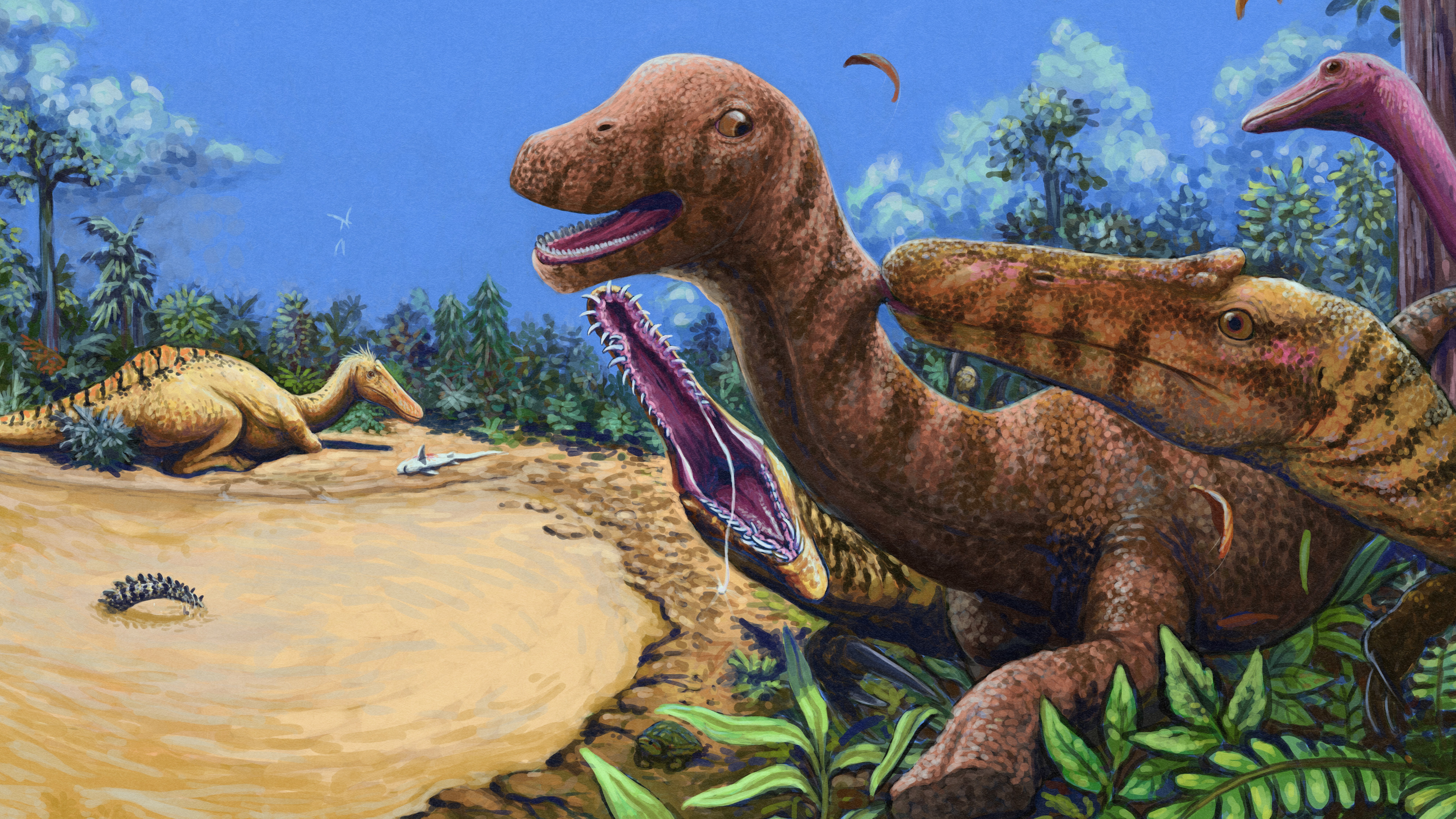Awe-Inspiring Scenes: Arizona's Red Rock Country

Arizona's Red Rock Country
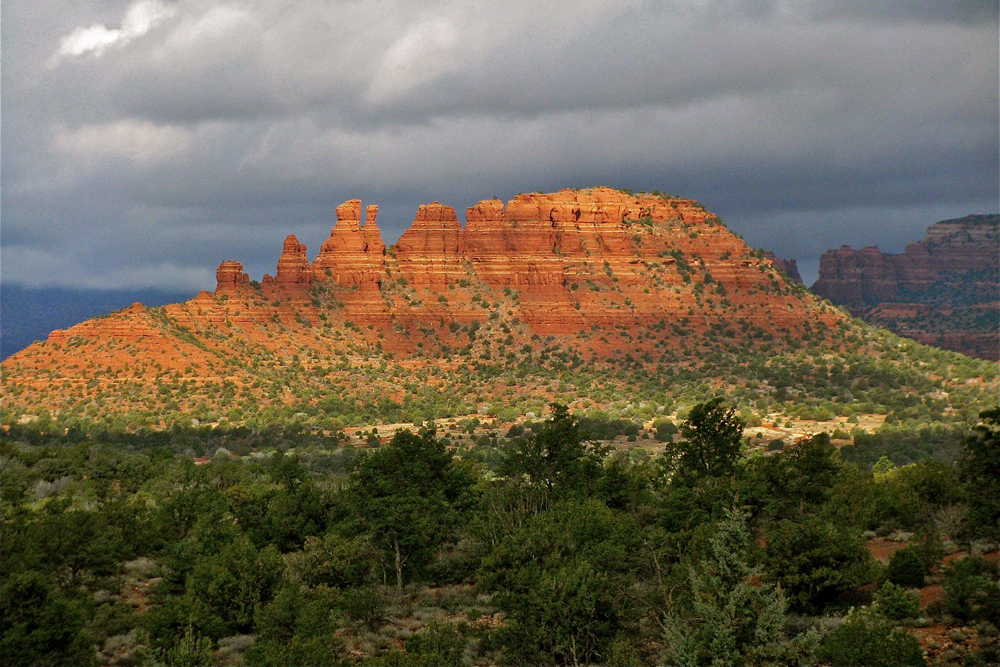
Beautiful red sandstone formations are found throughout the American West, but nowhere are they more magnificent than surrounding a community in north-central Arizona known as Sedona. This is Red Rock Country, where wind-shaped mesas are separated by water-carved canyons that began their slow formation millions of years ago.
Inspiring beauty
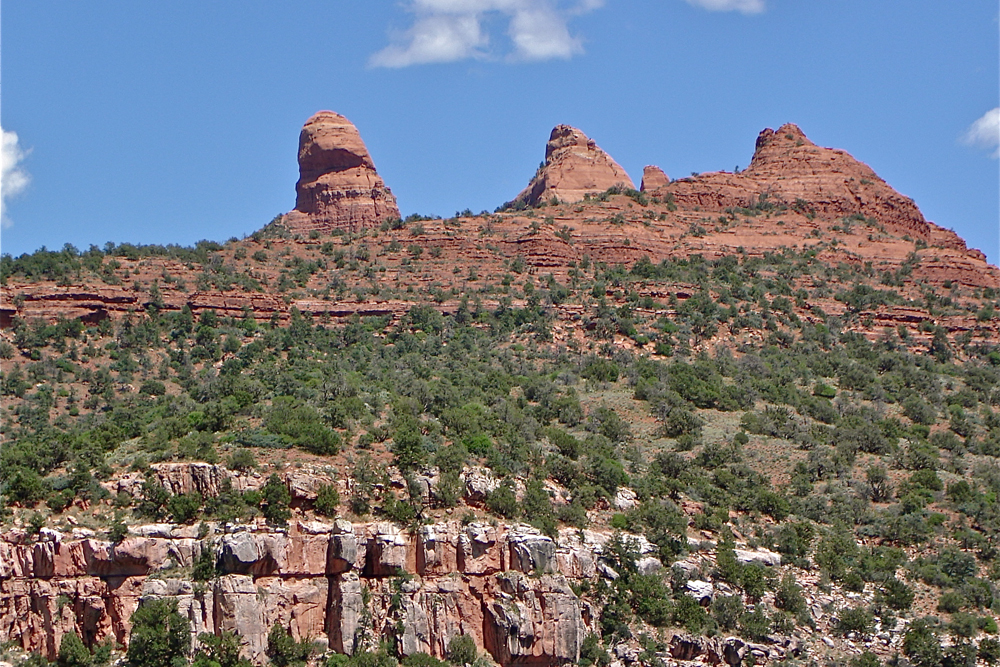
The awe-inspiring beauty of the local Sedona landscape is the result of its unique geographical location at the southern escarpment of the Colorado Plateau. The Colorado Plateau is about the size of Arizona itself with an average elevation of about 7,000 feet (2,134 meters) and extends into the four corner states of Arizona, Utah, Colorado and New Mexico. A short 80 miles (129 kilometers) north of Sedona's red rocks, the Colorado River has majestically carved the Grand Canyon into this ever-rising western plateau.
Her namesake
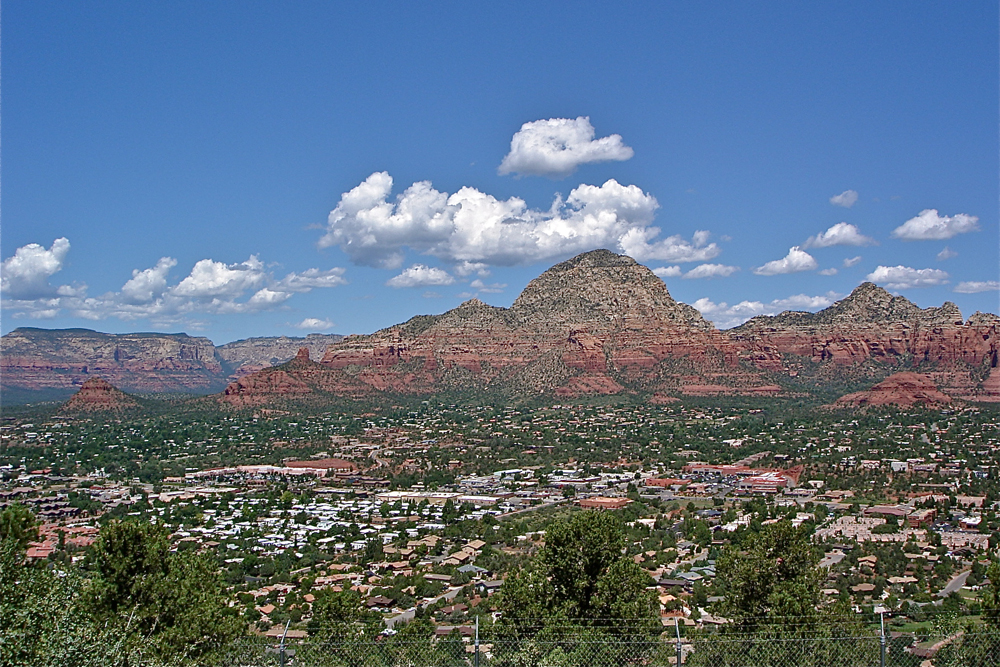
The community of Sedona, named after the early female pioneer, Sedona Schnebly, is nestled up against these red rock sandstone cliffs, creating a human habitat that is both beautiful and for many, spiritually refreshing. It is a community where humans literally live side-by-side with 330 million years of geology.
Mogollon Rim

If one could somehow gaze northward from Sedona through the high desert vegetation toward the Grand Canyon, a nine-layer cake-like structure of sedimentary rocks that took 350 million years to form would be seen. The top layer is known locally as the Mogollon Rim and rises some 2,000 feet (690 m) above Sedona. This is a layer of off-white limestone composed of ancient seashells and microscopic marine organisms left behind when the warm tropical seas that once blanketed the area retreated.
Ancient coastline
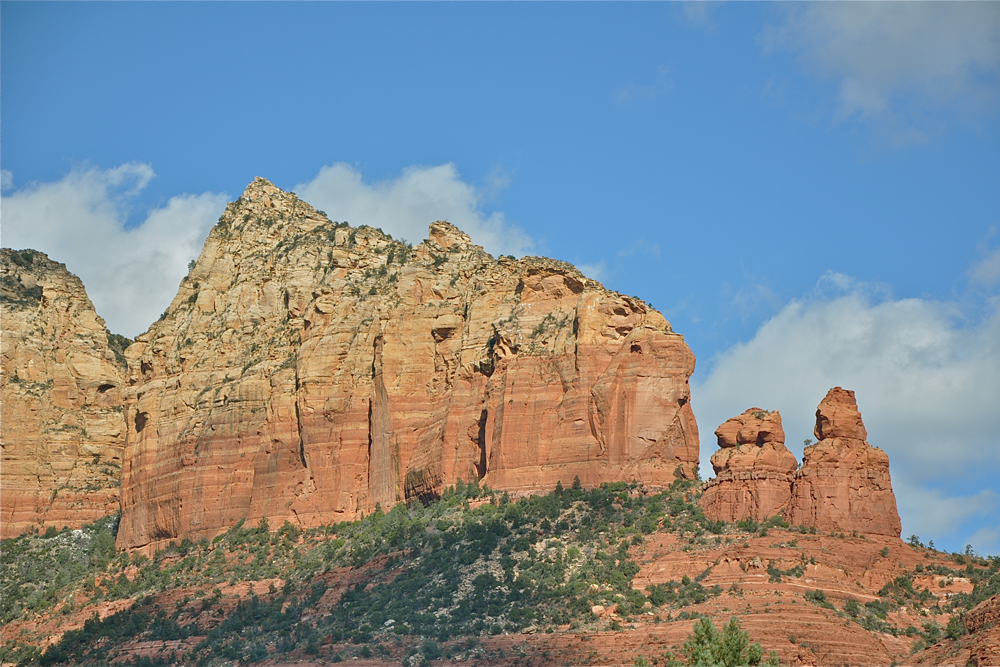
This land was once a seabed as well as a rugged coastline when ancient tropical seas ebbed and flowed over the terrain for millions of years. The red sandstone that is so spectacular today was deposited on those prehistoric ocean floors during the Early Mississippian Epoch some 330 million years ago.
Change upon change
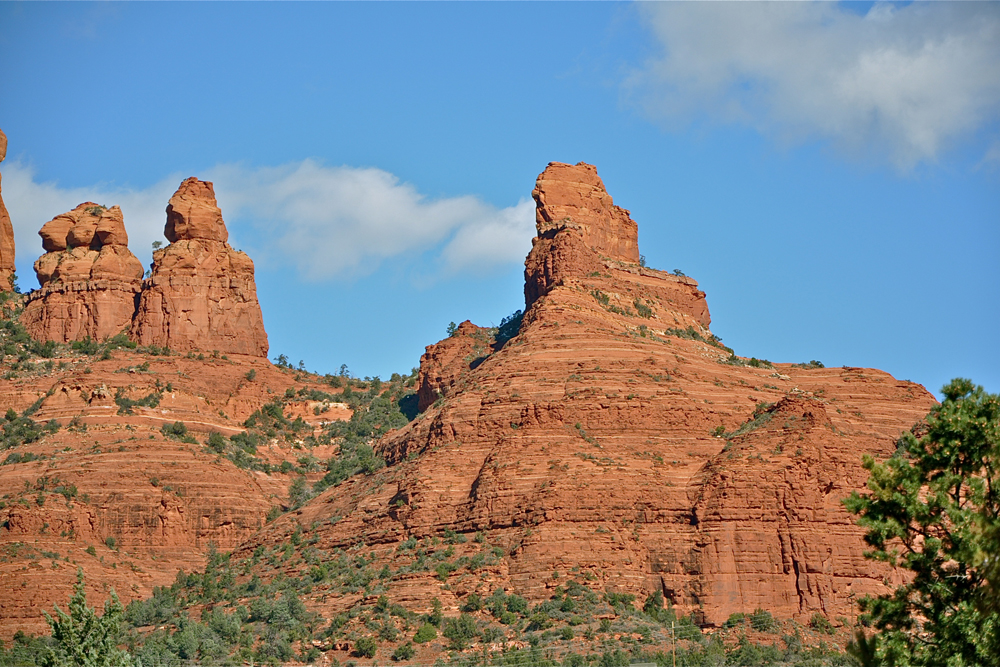
Geological evidence suggests that this landscape was repeatedly covered and uncovered by ancient seas as many as seven times. For thousands of years the land was even covered by a freshwater lake. At other times ancient rivers flowed into the area, laying down deposits of mud and vegetation detritus.
Red coloration
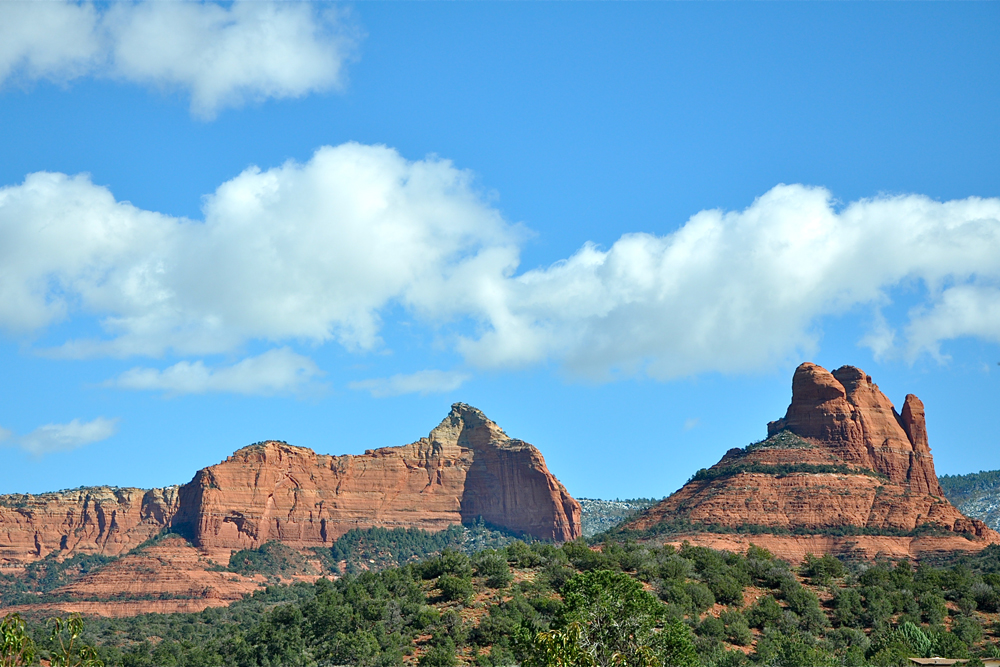
The red color of this land comes from a microscopic layer of iron oxide that covered each grain of sand when the massive blocks of sandstone lay submerged on the ocean floor. When this sandstone then emerged into the air, they literally rusted due to oxidation that occurred when the iron oxide was exposed.
Get the world’s most fascinating discoveries delivered straight to your inbox.
Great views
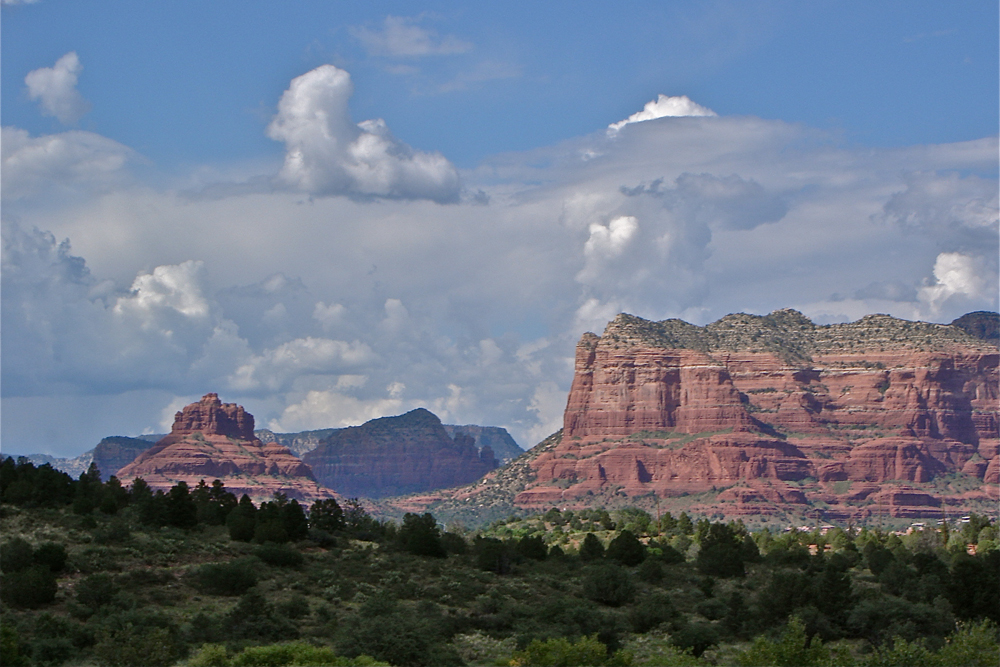
From the streets of Sedona one can scrutinize the towering cliffs and easily see two distinct layers of sandstone. The bottom red rock layers are composed of Schnebly Hill Sandstone. The upper layers of the cliffs are mostly yellow Coconino Sandstone, indicating the remains of sedimentary layers when the ancient seas had retreated leaving behind only sand dunes from ancient seashores and deserts.
Forces at work
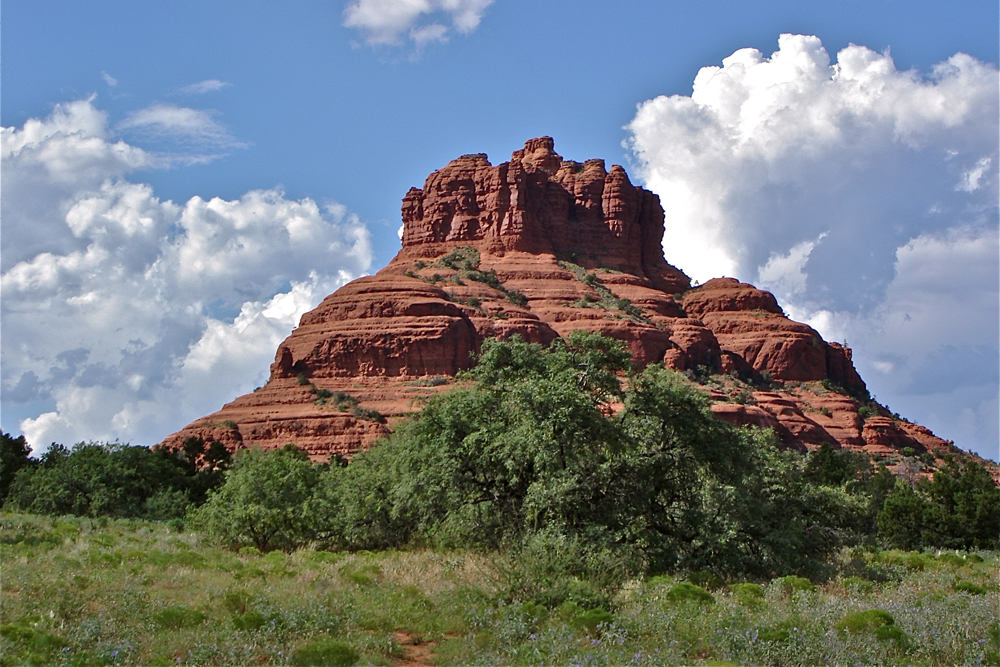
The forces of erosion have worked their magic on these sandstone blocks shaping them into interesting shapes that modern man just had to name. One famous monolith is known as Bell Rock it is a butte made up of horizontally bedded sedimentary rock from the Permian Era. Its summit is at an elevation of 4,919 feet (1,499 m) some 496 feet (151 m) higher than the nearby community of Sedona. The sandstone of Bell Rock is a part of the Schnebly Hill Formation.
Magnificent cliffs
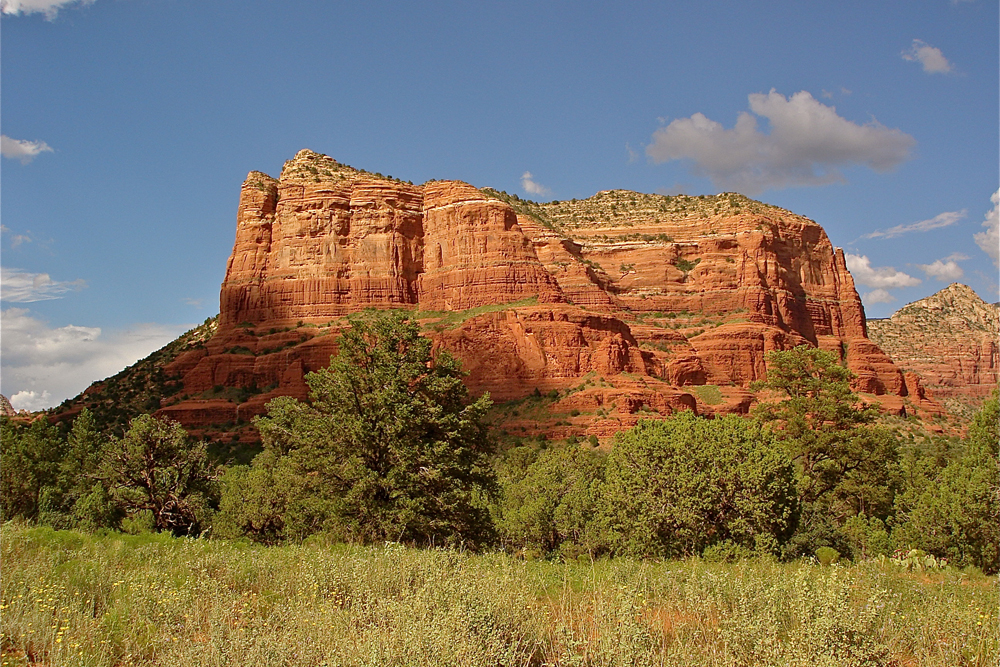
All the magnificent red buttes and sandstone cliffs found in this area, like Courthouse Rock shown above, are from this Schnebly Hill Formation period of geological time. Even the bright orange sandstone cliffs found in nearby Oak Creek Canyon come from this period.
An obelisk
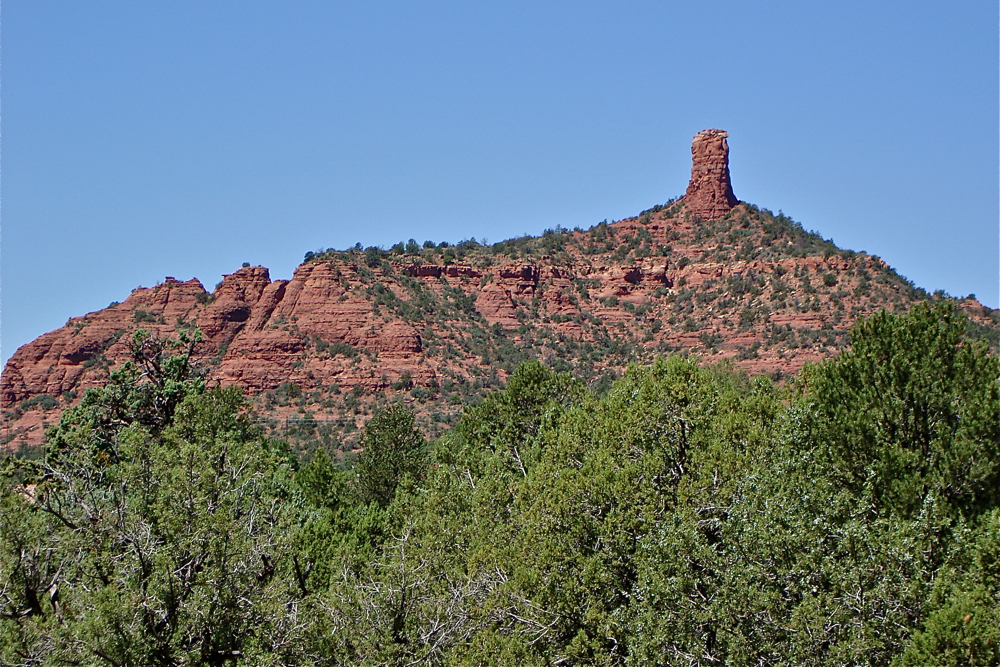
Sometimes the forces of erosion have swept away only but the hardest sandstone of an ancient butte. Here, an obelisk formation known as Chimney Rock still resists the wind and rain as it rises some 100 feet (30 m) above the remains of a once much larger ancient red rock butte.


